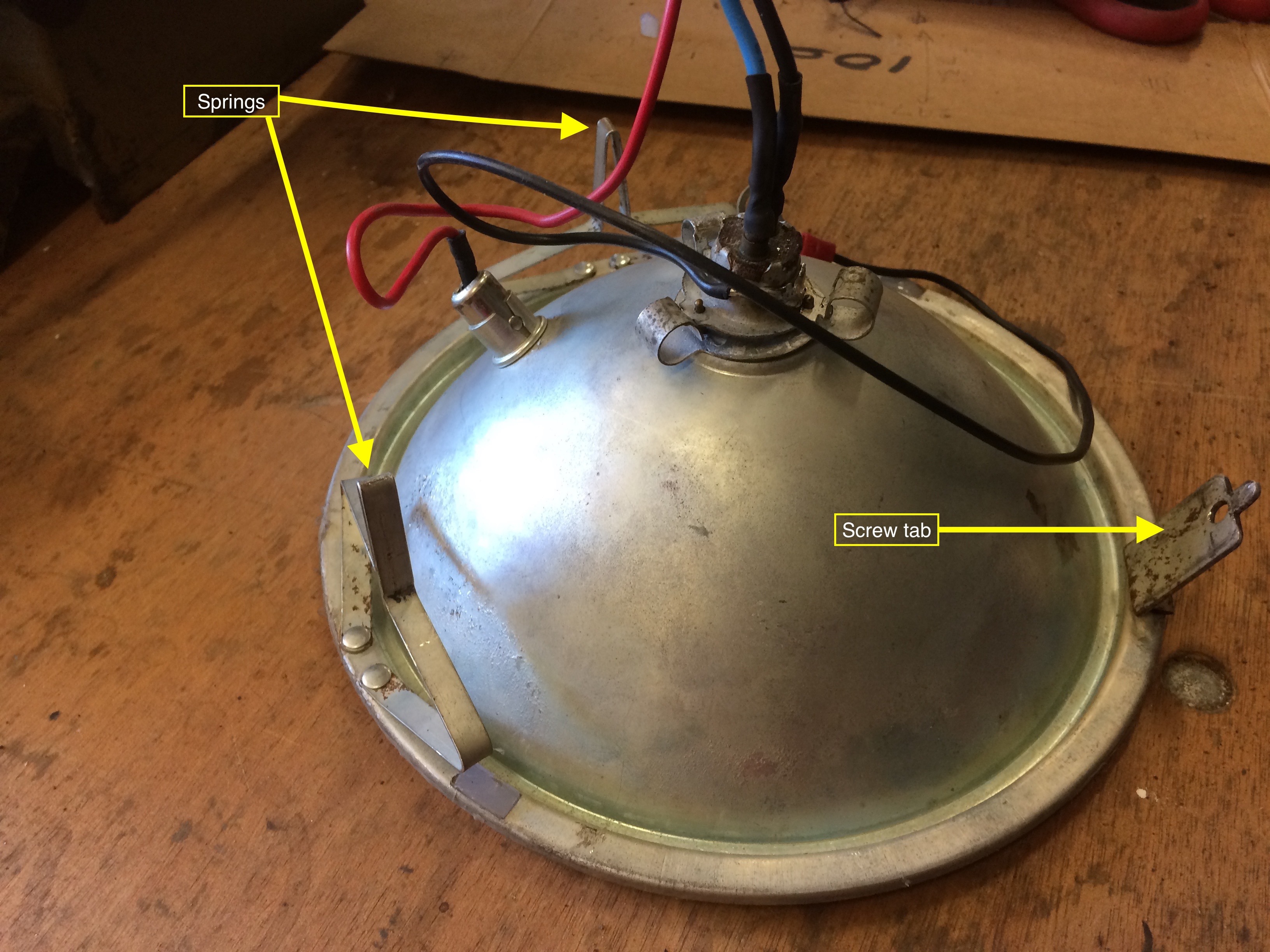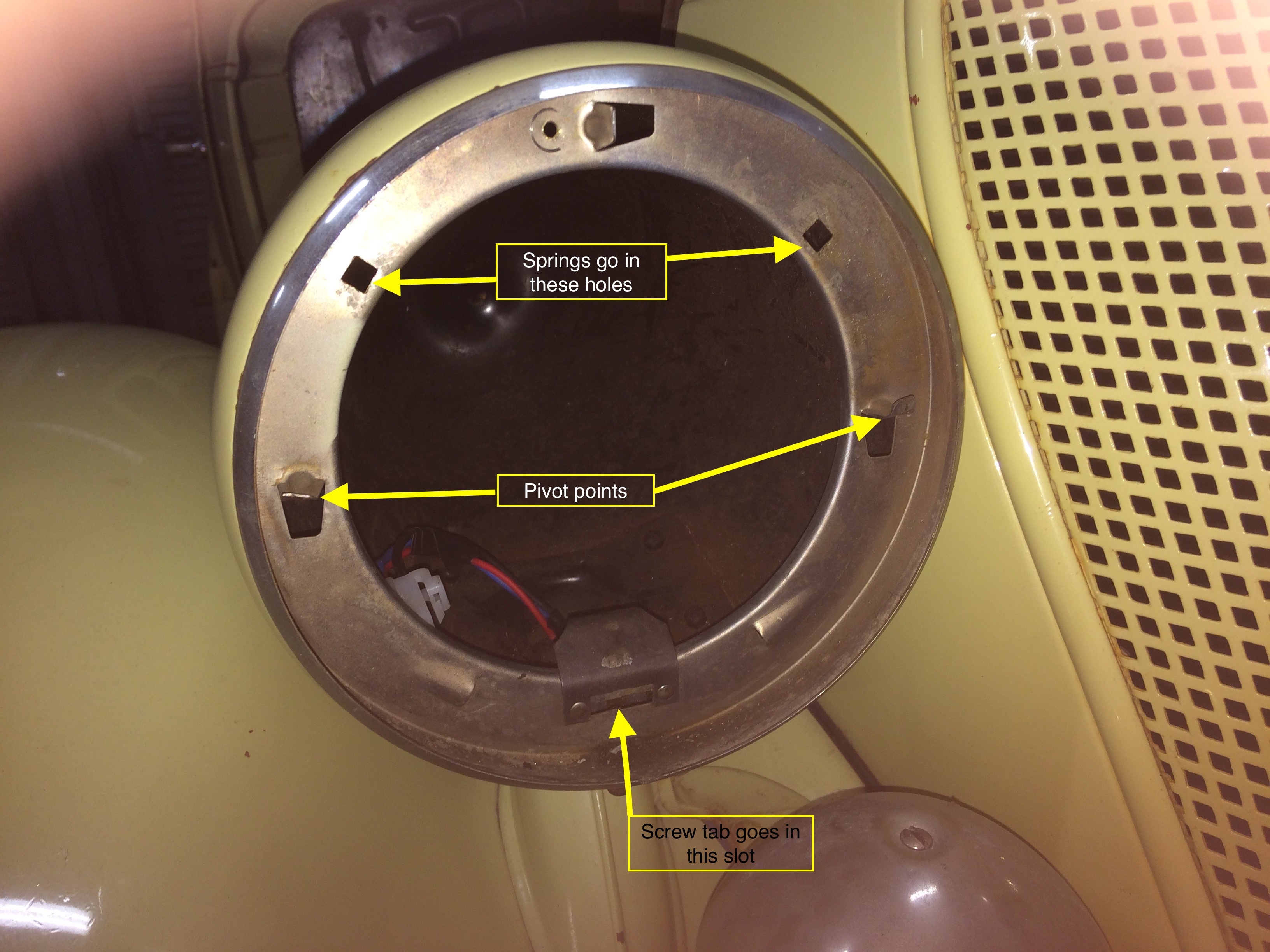Inside a 30s bullet headlight
For those contemplating removing the glass from a bullet headlight for the first time. As well as knowing the procedure, a topic covered here fairly regularly, it might demystify the process a little by knowing what is inside the headlight, knowing what you are dealing with.
The first photo is the back of the reflector, the second photo is of the bucket and how the reflector fits into it. The pivot points are what the reflector rotates around when you press the top of the glass in.
As always the most important part of removing the glass is to first cover the work area with cushions and quilts.


The first photo is the back of the reflector, the second photo is of the bucket and how the reflector fits into it. The pivot points are what the reflector rotates around when you press the top of the glass in.
As always the most important part of removing the glass is to first cover the work area with cushions and quilts.


0
Comments
-
Update, this is a 36 H & T headlight, the details are specific to 36 only.0
-
The 1937 reflector is very similar, but the bucket has no flange like the one shown here for the 1936. Instead of the flange, there are loose spring retainers at the locations of the two square holes ("springs go in these holes") and one loose tab retainer at the 6:00 position of the bucket opening. These retainers are held in place by the stainless steel ring around the perimeter of the opening of the headlight bucket, and are easily removed.
Incidentally, in both the 1936 and 1937 headlights, the reflector is locked into place by a vertical machine screw at the 6:00 position which enters a threaded hole in the bucket and continues up to engage that little hole shown in the screw tab (top picture). Once the screw has entered the hole, the tab and reflector are firmly held in place in the bucket. The lens (not shown) fits snugly within the stainless steel ring and is held at its top and bottom edge (the left and right sides of the lens are actually narrower than the opening in the stainless ring). When the reflector is firmly in place, it holds the lens.
Fortunately, LED headlight bulbs are available that perfectly fit the 1930's sockets.0 -
Agreed, the system is a complete PITA, clever but too clever for the real world, that's probably why it was used for only a few years.
But it is what it is, we are where we are, you have to play the cards you're dealt etc etc more platitudes/wise sayings etc etc.0 -
You guys are not making me feel good ...I've been wanting to try some new LED bulbs - even bought the bulbs - but have not wanted to take apart those original 1934 headlights (even though I have a few spare lenses). Even the restoration shop that put together and installed that set of rebuilt original headlights (after removing the 1936 'bullet' headlights with sealed beams that I had on there) do not want to mess with it.
What I see here is an OPPORTUNITY for one of you fabrication-savvy and talented people to fabricate some kind of "fix" for that lens retaining system. Why, you might well become a hundredaire from something like that!
PS; I still have those 36 bullet headlights if somebody needs them. As seen on attached photo from 2006 of my car. Also still have the 17" wires and wide-whites (I went to 16s).
0 -
Funny but I found that I had more confidence removing the lens when I at first cracked the lens by accident and needed to have a go. If I stuffed it up the lens was knackered anyway. It popped out and I popped it back in and out till I was confident to do it with the new one. I did find that the sound of the glass sharding/cracking around the edges is really off putting though. My only recommendation is you try it with a new lens handy just incase. I'd never try it with no backup lens. I've bought a new one boxed and waiting the day I need to brave it out again cheers ken0
-
My first secret is to remove the thin stainless steel rim from the edge of the bucket opening. It peels out and can be peeled back in. Once it's out, the opening is ample, and the reflector and lens can be removed with ease.
The second secret is using a plastic credit card between the lens edge and the stainless steel rim, to ease the glass out of the opening.
My third secret is padding. Plenty of pillows and blankets draped over the fender and bumper, beneath the headlight.0
Categories
- 36.9K All Categories
- 112 Hudson 1916 - 1929
- 20 Upcoming Events
- 92 Essex Super 6
- 28.6K HUDSON
- 571 "How To" - Skills, mechanical and other wise
- 995 Street Rods
- 151 American Motors
- 178 The Flathead Forum
- 49 Manuals, etc,.
- 78 Hudson 8
- 44 FORUM - Instructions and Tips on using the forum
- 2.8K CLASSIFIEDS
- 608 Vehicles
- 2.1K Parts & Pieces
- 77 Literature & Memorabilia
- Hudson 1916 - 1929 Yahoo Groups Archived Photos


